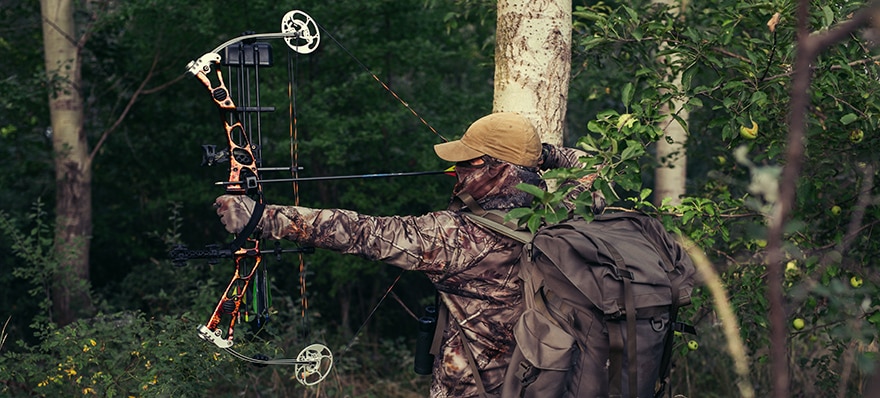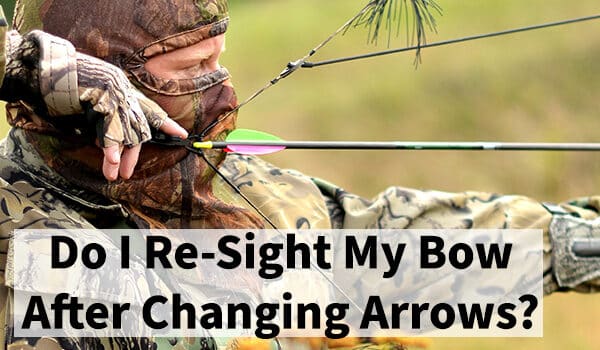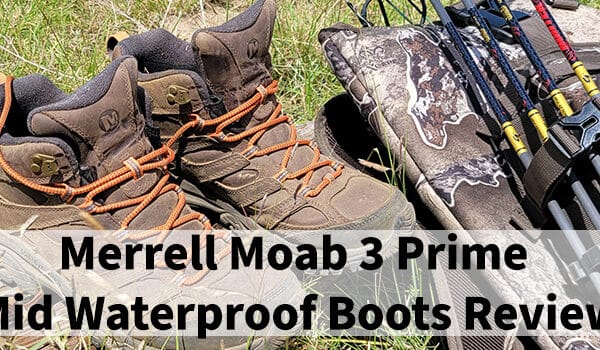An Arrow Selection Guide for Archery Hunters
As a hunter, I understand the importance of selecting the right equipment for optimal performance in the field. When it comes to arrows, choosing the correct size is crucial. Using the wrong size can lead to inconsistent shots, reduced accuracy, and even equipment damage. In this guide, we will share our knowledge and experience to help you determine the ideal size of arrows for your hunting bow. So let’s dive in and ensure your arrows fly true on your next hunting adventure.
Table of contents
Understanding Arrow Anatomy
Before delving into how to determine arrow size, let’s familiarize ourselves with the basic components of an arrow. Understanding these components will aid in the sizing process.

Arrow Shaft
The arrow shaft is the main body of the arrow, typically made of carbon, aluminum, or a combination of materials. It provides the backbone and stability to the arrow’s flight.
Arrow Nock
The arrow nock is a small plastic or metal piece located at the rear end of the arrow shaft. It attaches the arrow to the bowstring and helps align the arrow during the shot.
Arrow Fletching
The arrow fletching consists of two or more feathers or synthetic vanes attached near the rear end of the arrow shaft. Fletchings stabilize the arrow’s flight and ensure consistent arrow orientation.
Arrow Point or Broadhead
The arrow point, or broadhead for hunting arrows, is the arrow’s front end penetrating the target. It can be a field point for practice or a specialized broadhead for hunting.
Determining Your Draw Length

Selecting the right size arrow for your compound bow is important for optimal performance, accuracy, consistency, and safety. A properly sized arrow ensures that the energy transferred from the bow to the arrow is efficiently utilized, resulting in consistent and accurate shots. A mismatched arrow can lead to poor arrow flight, inconsistent grouping, decreased speed, and even potential damage to the bow or injury to the archer. The arrow’s spine, determined by factors like draw
length, weight, and arrow point type must be appropriately matched to the bow’s specifications.
Additionally, considering your shooting style and purpose further enhances the importance of selecting the correct arrow size, directly impacting factors like penetration, trajectory, and overall shooting experience. By investing time and effort into determining the right arrow size, archers can maximize their bow performance and elevate their shooting proficiency, resulting in a more enjoyable and successful archery experience.
Method 1: Measuring Your Wingspan
One of the ways to determine your draw length, which influences arrow size, is by measuring your wingspan. Stand with your arms outstretched and palms facing forward. Have someone measure the distance from fingertip to fingertip. Divide this measurement by 2.5, and you will have an approximate draw length in inches.”
Method 2: Archery Pro or Bow Shop Assistance
This sounds obvious, but visiting a pro archery shop or seeking assistance from an experienced archer can provide an accurate measurement of your draw length. They have specialized tools and expertise to precisely measure and determine your draw length.
Choosing the Right Arrow Length
Now that you know your draw length, it’s time to select the appropriate arrow length. The arrow length should generally be slightly longer than your draw length, considering factors such as the type of bow and shooting style.

Recurve Bows
Add approximately 1 to 2 inches to your draw length for recurve bows to determine the arrow length. This additional length compensates for the lack of mechanical release aids in recurve shooting.
Compound Bows
With compound bows, the arrow length should be set according to the manufacturer’s recommendations or the instructions provided with the bow. This ensures that the arrow aligns properly with the bow’s cam system and rest, maximizing accuracy and performance.
Selecting the Proper Spine (Stiffness)
The Arrow spine refers to the stiffness of the arrow shaft. It needs to match the power of your bow to achieve optimal flight and accuracy. Determining the proper spine for a compound bow arrow often involves a formula considering the archer’s draw length, draw weight and arrow point weight. One commonly used formula is the AMO (Archery Manufacturers Organization) spine deflection system. This formula considers the arrow’s spine deflection, which measures its stiffness. The basic principle is that as the draw weight and draw length increase, a stiffer arrow spine is required to handle the added force and maintain proper arrow flight.

Conversely, a more flexible arrow spine is suitable as the draw weight and length decrease. The specific AMO spine deflection value is determined by manufacturers based on standardized testing procedures. By referring to arrow manufacturer charts that correlate draw length and draw weight to the appropriate spine deflection, archers can select arrows with the optimal stiffness for their compound bows, promoting consistent flight and improved accuracy. It’s important to note that other factors like shooting style, broadhead weight, and personal preference can influence the final arrow selection, so consulting an archery professional can help refine the formula-based calculations.
Draw Weight
Your bow’s draw weight plays a significant role in determining the arrow’s spine. Higher draw weights require stiffer arrows to withstand the force exerted during the shot. Consult the arrow manufacturer’s spine selection chart to match the recommended spine range for your draw weight.
Arrow Length
As arrow length increases, the arrow becomes more flexible, requiring a stiffer spine to compensate. Adjust the spine selection accordingly if you have chosen an arrow length that deviates significantly from the average for your draw length.
Shooting Style and Bow Accessories

Your shooting style and the accessories attached to your bow can also influence arrow spine selection. If you shoot with a finger release, which tends to put more stress on the arrow, you may need a stiffer spine. Similarly, if you have heavy stabilizers or other weight accessories, they can affect arrow flight, requiring adjustments to the spine selection.
Fine-Tuning Arrow Weight
The weight of your arrows can impact their flight characteristics, penetration, and overall performance. Choosing an arrow weight that suits your hunting needs and bow setup is essential.
Considerations for Hunting
In hunting scenarios, penetration, and kinetic energy are crucial factors. Heavier arrows typically deliver more kinetic energy and better penetration, which can be advantageous when targeting larger game animals. However, ensuring that your bow can handle the increased arrow weight without compromising speed and accuracy is essential.
Bow Manufacturer Recommendations
Refer to your bow manufacturer’s specifications and recommendations for the ideal arrow weight range that complements your bow’s performance. Sticking within these guidelines will help you optimize your setup for both hunting and accuracy.
How to Determine What Size Arrows I Need? Conclusion

Determining the correct arrow size for your hunting bow is crucial to achieving optimal performance and accuracy in the field. By understanding your draw length, selecting the appropriate arrow length, and considering factors like spine stiffness and arrow weight, you can ensure that your arrows fly true with every shot. Remember to consult manufacturer recommendations, seek professional assistance, and prioritize safety. Armed with the right-sized arrows, you’ll be well-equipped to take on hunting challenges and increase your chances of a successful and ethical hunt.
How to Determine What Size Arrows I Need? FAQs
Yes, you can use the same arrows for target practice and hunting if they meet the necessary bow and shooting style requirements. However, it’s recommended to have specific broadheads for hunting arrows to ensure optimal performance and accuracy during hunting situations.
Yes, arrows can be cut to achieve the desired length. However, it’s crucial to consult a professional or follow the manufacturer’s guidelines to ensure proper arrow-cutting techniques and maintain structural integrity.
Yes, arrow tuning is essential for achieving optimal performance. Bow tuning involves aligning the arrow rest, nock point, and bowstring and adjusting the arrow’s spine and weight distribution. Proper tuning ensures that your arrows fly straight and consistently, increasing accuracy and performance.
The choice between carbon and aluminum arrows depends on various factors, including personal preference, budget, and bow compatibility. Carbon arrows are lightweight, durable, and offer excellent speed and accuracy. Aluminum arrows are more budget-friendly and offer better durability against impacts. Consider your specific needs and consult with archery professionals to determine the best arrow material for your hunting bow.



